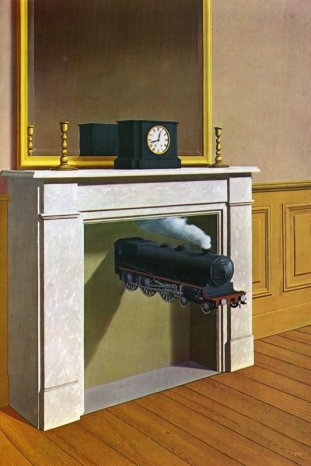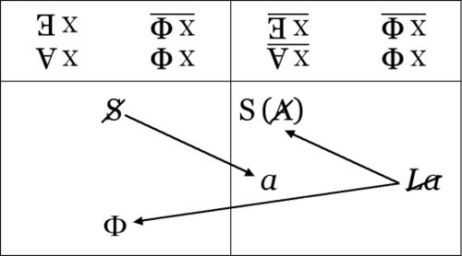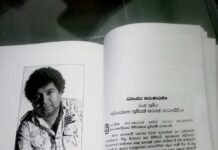සාන්ත පිතර්බුර්ගයේ එර්මිතාෂ් (Hermitage) කෞතුකාගාරයේ “යථාර්ථවාදය” චිත්ර ප්රදර්ශනය
සාන්ත පිතර්බුර්ගයේ චිත්ර සහ කලා නිර්මාණ මිලියන් 3ක ට වඩා ඇති එර්මිතාෂ් (hermitage) කෞතුකාගාරය නැරඹීමට ගිය අවස්ථාවේ යථාර්තවාදී කලාව පිලිබඳ චිත්ර ප්රදර්ශනයක් එහි දෙවන ගොඩ නැගිල්ල වන ජෙනරල් ස්ටාෆ් හි පැවැත්වෙන බව දුටිමි. එර්මිතාෂ් (hermitage) කෞතුකාගාරය පිළිබඳව ත් එහි පැරණි කළා නිර්මාණ පිළිබඳවත් වෙනත් ලිපියකින් ලියමි.
දැනට ඉතා කෙටියෙන් හැඳින්වීමක් කරන්නේ නම් මෙය පිහිටවුයේ 1764 දී දෙවන කැතරින් අධිරාජිනිය විසින්ය. ලෝකයේ ඇති පරණම කෞතුකාගාරයක් වන මෙය ට්සාර් රජවරුන් විසින් මහජන ප්රදර්ශනය සඳහා විවෘත කරන ලද්දේ 1852 දීය. සොවියට් දේශය පිහිටවූ 1917 විප්ලවයෙන් පසු මෙහි ඇති නිර්මාණයන්හි වටිනාකම සලකා සෝවියට් බලධාරීන් විසින් ජාතික සම්පතක් ලෙස එර්මිතාෂය රැක බලා ගන්නා ලදී. එහෙත් 1940 – 1944 අතර ඇතිවුණු දෙවන ලෝක සංග්රාමයේ දී ලෙනින්ග්ග්රාඩ් නගරය දින 900 ක වැටලෑමකට හසුවුණු අතර ඒ කාලයේ වැටුණු ජර්මන් බෝම්බ වලින් එර්මිතාෂයට බලවත් හානි සිදු වුනි. එහි තිබු වටිනා කළා කෘති රුසියාවේ වෙනත් තැන්වල ට යවා ආරක්ෂා කරන ලදී. පසුව පෙර ආකාරයෙන්ම ගොඩ නගන ලදුව පෙර ශ්රී විභුතියෙන්ම අනගි මිල කළ නොහැකි කළා කෘති ප්රදර්ශනයේ තබා තිබේ.
සෝවියට් දේශය පැවති සමයේ සමාජවාදී යථාර්ථවාදය මුලික කරගත් කළා නිර්මාණ ඉදිරිපත් කල යුතු යයි රීතියක් විය. ඒ ගැන පෙරදීද මා ලියා ඇත. එහිදී රජයේ බලපෑම ඉස්මතුවීම නිසා එම රීතියට වෙනස්ව ස්වාධින කළා නිර්මාණ කරන්නට ඇතැම් කලා කරුවන් වෙහෙස ගත් අතර එතුල සිටිමින් හොඳ නිර්මාණ බිහි කරන්නට චින්ගීස් අයිත්මාතව් වැනි කලාකරුවන් තැත් කළහ.
මේ ප්රදර්ශනය ගැන කරන හැඳින්වීමේ මෙසේ ලියැවෙයි.
“කලාව සම්බන්ධයෙන් ගත් කළ යථාර්ථවාදය අද ඉතා වැදගත් මාතෘකාවක් වන්නේ ඇයි? එර්මිතාෂ් කෞතුකාගාරයේ “යථාර්ථවාදය පිලිබඳ චිත්ර ප්රදර්ශනය” වනාහී මෙම මාතෘකාවට පිළිතුරක් සපයන්නට ගත් උත්සාහයකි. එරිමිතාෂ් හි හමුදා වෘත්තික ගොඩ නැගිල්ල (General Staff building – ancient name of the building) 2015 සිට දහ නමවන ශතවර්ෂයේ සිට විසි එක්වන ශතවර්ෂය දක්වා වන යථාර්ථවාදය පිලිබඳ කළා කෘති ඒකරාශී කර තිබෙන ස්ථානයකි. එමනිසා මෙම ව්යායාමය යථාර්ථවාදයේ ස්වරූපය හා මතවාදය පිලිබඳ බහුවිධ සංවාදයන් මතු කිරීමට ගත් ප්රයත්නයකි.
විසිවන සියවසේ යථාර්ථවාදයේ ස්වරූප බොහොමයකි. හයිපර් – හෙවති අධිතාත්විකවාදය (Hyper-realism), සර් හෙවත් අතාත්විකවාදය (surrealism), ඡායා-යථාර්තවාදය (Photo-realism), සමාජ යථාර්ථවාදය (Social-realism) හා මායාවී යථාර්ථවාදය (magical-realism) මේ අතරින් කිහිපයකි. මේ සියවස අගභාගයේ සිට තාත්විකවාදී නැඹුරුව වඩා උනන්දුවට මෙන්ම සාකච්චාවට බඳුන්වී තිබේ.
යථාර්තවාදී එළඹුමේ මුලික පදනම – සත්තාව සෙවීම – යනු ආත්මඥාණය ලබා ගැනීමේ සරලම නිර්මාණාත්මක ක්රමයයි. කථනයන් ප්රමුඛ කොට ගත් පුරාතනික කළා ලෝකයේ දැවැන්තයන් ගේ සිතුවම් වලින් පටන් ගෙන, යථාර්ථවාදී කලාව අද තාක්ෂණික හා මනෝමූලික වූ සංකීර්ණ නිර්දේශයන් පද්ධතියක් මත පදනම්ව භෞතිකවාදී ලෝකයේ මනෝමූලික දැක්ම නිරූපණය කරයි.
යථාර්ථයේ වෙනස පිලිබඳ සංජානනය රඳා පවතින්නේ වත්මන් පෞද්ගලික හා සාමාජිය ප්රමුඛතා මතය. දැන් නැවතත් මේ ආස්ථානය වැදගත් වෙමින් යයි. කලාව විසින් මෙම වෙනස උරා ගනිමින් සෑම අවස්ථාවකම සත්තාවේ විවිධාකාර පිළිබිඹු නිපදවයි. ප්රදර්ශනයේ ඇති සමකාලීන කලාකරුවන්ගේ නිර්මාණ තමන්ගේම මුලාශ්රයන් හඳුන්වා දෙයි. මේ සෑම කලා කෘතියක්ම පවතින්නාවූ මොහොත තුල පැවැත්මේ අත්දැකීමෙහි (අනුභූතික හෝ සංදෘෂ්ටික අත්දැකීමෙහි) නිරවද්යවූ පිටපතක් වනවා මෙන්ම, රූපකයක, ව්යන්ගයක, කේතයක, සංකේතාත්මක තේරුමක හෝ සංස්කෘතික සම්බන්ධයක ශක්යතාවයක් සහිතය.
ඇමෙරිකානු කලාකරුවකු වන ටෝනි මටෙලි ගේ අධිතාත්විකවාදී ප්රතිමා නිර්මාණය (ගැරී ටටින්ස්ටියන් කලා කෘති සමූහය) නම් කර ඇත්තේ ඉංග්රීසියෙන් F*ck’d(Couple) – යුවලකගේ විනාශය යනුවෙනි. මෙහි නවීන තාක්ෂණික ක්රමවේදයක් ඇසුරෙන් ඉන්ද්රියගෝචර යථාර්ථයේ (sensual reality) ගැඹුරු හා භාවාත්මික ශෝකය හා සානුකම්පික සොබාව අනුකරණය ඇසුරෙන් විදහා පෙන්වයි.
ප්රදර්ශනයට සහභාගී වන අනිත් කලාකරුවන් දෙදෙනා නම් ඇමරිකානු ජාතික ජිම් ෂෝ සහ බ්රිතාන්ය ජාතික මිච් ග්රිෆිත්ය. මිච් ග්රිෆිත් ගේ නිර්මාණ සම්භාවණිය යථාර්ථවාදයේ සුසමාදර්ශයකි. “
මිච් ග්රිෆිත් ගේ ඉහත නිර්මාණයේ තරුණයාගේ හිසේ ඇත්තේ ක්රෙඩිට් කාර්ඩ් වලින් සාදන ලද ඔටුන්නකි. නවීන සමාජය වැඳ පුදන්නේ ධනය, බලය, තත්වය හා ප්රසිද්ධියට බව මෙමගින් පෙන්වයි. ඔටුන්න මගින් පෙන්වන්නේ තමන් කෙරෙහි ඇති ආලය ප්රමුඛවූ (narcissism) ව්යාජ වටිනාකම් හරහා මිනිස් ප්රතිමා හා හොර රජුන් නව සමාජයේ බලය පැතිරවන බවයි.
අද සමාජය සිරුර පිලිබඳ අනවශ්ය අවධානයක් පෙන්වයි. සිරුර සඳහා වන ව්යායාම මෙන්ම සිරුරේ බලය, ශක්තිය, මුදු බව, ලස්සන ආදී සියල්ල ගොඩ නැංවීම සඳහා විශේෂිත ආහාර පානද විකිණෙයි.සාමාන්ය ලෙස ඇවිදීම, දිවීම, ස්වභාව ධර්මයේ රස විඳීම වෙනුවට ජිම් එකක් තුල දහදිය හෙළීම සුලබ දෙයක් වුවද එහි අන්තයකට යාම තුල සිරුර අනිකාට පෙන්වීමේ දැඩි නාසිස්මික ආශාව පැන නගී.
සිරුර අනිකුන් සමුහයකට පුද කිරීම තුලින් ආශාව සමනය වේවිද?
ඉහත චිත්රයේ ඇත්තේ තමන්ගේ ශරීරයේ බර ගැන පසුතැවෙන යුවලකි.
“කළා නිර්මාණයේදී සැමවිටම නිකායන් දෙකක් තිබුණි. එකක් විඥානවාදීන්ගේය. අනෙක යථාර්ථවාදීන් ගේය.” – තියොෆයිල් ගෝටියේ
“There have always been two schools of thought in painting: That of the idealists and that of Realists. “-Theophile Gautier
| ගොගොන් – මිච් ග්රිෆින් |
මේ වනාහී ඉතාලියානු කලාකරුවකු වන කරවගියෝ ගේ ගොර්ගොන් වරුන්ගේ මෙඩුසා නමැති දෙව්දුවගේ මුහුණට කෙලින්ම සමානකම දක්වන චිත්රයකි. ග්රීක මිථ්යා කතා වලට අනුව මෙඩුසා දෙස බලන හැම කෙනෙක්ම ඇගේ දරුණු ඇස් වලින් ශෛලමය පාෂාණයක් බවට පත්වේ. ග්රිෆිත් ගේ මෙඩුසා මුහුණ තෙල් වලින් නැහැවී ඇගේ ඇස් තදින් වැසී බලය අඩුවී තිබේ. මෙහිදී ඔහු ප්රශ්න කරන්නේ සොබාදහම වනසමින් ඇතිවෙන කර්මාන්ත වල වර්ධනයට එරෙහි වන්නන් යක්ෂයන් කිරීමේ මාධ්ය හා දේශපාලන ව්යාපාරයයි.
| ඔවුන් රැගෙන යන දේ – මිච් ග්රිෆිත් |
| පළමුවන වෙඩික්කරු – යුදයට කතා කිරීම – මිච්ග්රිපිත්ස් |
| නවීන යුධෝපක්රම |
| හොඳම පැය |
| ජාන පාලම – මිච් ග්රිෆිත්
|
| ද්රෝන් යානය – මිච් ග්රිෆිත් |
“ඇතැම් විට වස්තූන් (objects) දෙස බැලීම වේදනාකාරී වුවද අපි ප්රමෝදයට පත්වන්නේ කලාව තුලින් යථාර්ථය වඩාත් තාත්වික ලෙස නිරූපණය වන්නේ නම් පමණි. උදාහරණයක් වශයෙන් මියගිය සත්වයන්ගේ හෝ මිනිසුන්ගේ ශරිර වල ස්වරූපය (පෙන්වීම) ගත හැකිය. මෙය තේරුම් ගැනීමට උපකාර කරගත හැකි හේතුව මෙයයි: එනම් අපේ ධාරිතාවය කොපමණ කුඩා වුවත්, දර්ශනවාදියෙකුට පමණක් නොව සාමාන්ය ජනතාවට පවා යමක් ඉගෙන ගැනීමට ලැබීම ඉහල වින්දනයක් ලැබිය හැකි දෙයක් වීමයි. අප ලබන ප්රමෝදයට හේතුව නම් චිත්රය දැකීමෙන් ලබන සතුට මෙන්ම යමක් ඉගෙනීමෙන් ලබන සතුටද සංයුක්තව ගත් කල යමක තේරුම අපට වැටහී යාමයි.
| අල්මාරිය Closet – Ilya and Emiliya Kabakov |
පහත යොමුවල වැඩි විස්තර තිබේ.
In a number of places Lacan distinguishes between the real and reality. Reality, for Lacan, is a synthesis of the Imaginary and the Symbolic. Here it’s important to recall that the Imaginary does not signify the fictional or that which only exists in the imagination. Rather, the Imaginary refers to the regime of images that come to structure the body and the body’s relations to the world. Lacan’s thesis is that when we are born we experience our body as a chaotic and disjointed multiplicity without distinction between inside and outside. Through an identification with an image of our body seen from a second person perspective we form a unity for ourselves that forms as a telos for the integration and coordination of our body. This unified image is not what I am, but rather a vector I aspire to in the unification and coordination of my various drives and movements.
For Lacan this split between chaotic lived body (body experienced in the first-person) and body-image (second-person body as a unified image) is ineradicable such that I never quite coincide with the body-image that I aspire to be. Yet the regime of images pertains not only to my body, but also to the various objects that populate the world. A field of vectors emerges between my body and the various images that populate the world around me. The world, as it were, gradually becomes an oriented world. Thus, for example, I do not merely see the image of the table in front of me as a flat image, but rather see it as containing a reserve of other dimensions that I can act on in a variety of ways. I see it as having what Husserl called an “internal horizon”, as being composed of profiles, such that the image is not one dimension, but has unseen sides. These profiles are coordinated with my body in a lived space-time that I can walk about to actualize other unseen dimensions, that I can grasp, that I can manipulate in a variety of ways. These potential movements embodied in the images of things other than me are vectors of my own potential movement forming a system between body and object. Lacan explores this phenomenology of the Imaginary and the body-object system in The Ethics of Psychoanalysis, providing a genetic account of how this system is gradually built up.
 Yet this is not yet what Lacan calls “reality”. Reality is not simply the vector system of body-object, but also has a symbolic dimension. The symbolic, in its turn, structures this system in a system of relations and symbolic positions determining an “order of the world”. A properly symbolic relation refers to a positional system that is not itself founded on any qualitative property of objects themselves. Saussure gives the nice example of the “5 o’clock train”. The 5 o’clock train has nothing to do with the material properties of the train. From day to day different material trains can serve as the 5 o’clock train. The 5 o’clock train can arrive at 5:03 or 4:50 and still be the 5 o’clock train. Just as we would look in vain to find that material property of gold or a dollar bill that gives it value, we look in vain to find the “5 o’clockness” of the 5 o’clock train in its material properties. This is because the 5 o’clockness of the train is a pure symbolic and relational property. The train takes on this property through a symbolic system, not its physical features. The symbolic is this system of relational positions that aren’t founded in any way in the physical properties of an object. It is a sorting and structuring of the world into a system of positions that can be filled by a variety of different material entities while nonetheless retaining that symbolic identity (both George W. Bush and Obama are presidents, even though they are different material beings).
Yet this is not yet what Lacan calls “reality”. Reality is not simply the vector system of body-object, but also has a symbolic dimension. The symbolic, in its turn, structures this system in a system of relations and symbolic positions determining an “order of the world”. A properly symbolic relation refers to a positional system that is not itself founded on any qualitative property of objects themselves. Saussure gives the nice example of the “5 o’clock train”. The 5 o’clock train has nothing to do with the material properties of the train. From day to day different material trains can serve as the 5 o’clock train. The 5 o’clock train can arrive at 5:03 or 4:50 and still be the 5 o’clock train. Just as we would look in vain to find that material property of gold or a dollar bill that gives it value, we look in vain to find the “5 o’clockness” of the 5 o’clock train in its material properties. This is because the 5 o’clockness of the train is a pure symbolic and relational property. The train takes on this property through a symbolic system, not its physical features. The symbolic is this system of relational positions that aren’t founded in any way in the physical properties of an object. It is a sorting and structuring of the world into a system of positions that can be filled by a variety of different material entities while nonetheless retaining that symbolic identity (both George W. Bush and Obama are presidents, even though they are different material beings).
 Reality, then, for Lacan, is this synthesis of the Imaginary and the Symbolic in a system where both orders reciprocally structure one another. Together they define a structured system of appearances, of manifestations, related to the human body and the symbolic social order. Within this order manifestations are structured in the Imaginary by the body-object vectoral system of appearances and the symbolic system that ascribes a symbolic position or place for all persons and entities that exist. It is also here, incidentally, that we get the logic of sovereignity explored by Agamben and Schmitt. The symbolic system assigning places is itself without foundations. Think of the way people often talk about dictionaries. Two people get in a dispute about what a word means. One person runs to the dictionary and says “well the dictionary says x!” The dictionary is treated as a sovereign authority that fixes meaning. The truth is that the dictionary only gets its authority from a community of speakers (i.e., the people involved in debate and that use language), yet there seems to be a nearly ineluctable transcendental illusion wherein we place an authority over and above the community of speakers, a source of meaning, that fixes meaning: A transcendent origin of meaning. We see a similar logic at work in the social field. Endlessly we search for a supplemental figure to fix and tame the foundationlessness of social reality: a sovereign king, a master figure, God, the father, etc.[Speculative dimension of reality] We erect a kinship system to secure origins. It was this supplemental fiction of a transcendent guarantee that Lacan tried to formalize in the masculine side (the left hand side above) of his graphs of sexuation. The masculine side of the graph of sexuation is the formal schema of all onto-theology, sovereignity, oligarchy, and theism.
Reality, then, for Lacan, is this synthesis of the Imaginary and the Symbolic in a system where both orders reciprocally structure one another. Together they define a structured system of appearances, of manifestations, related to the human body and the symbolic social order. Within this order manifestations are structured in the Imaginary by the body-object vectoral system of appearances and the symbolic system that ascribes a symbolic position or place for all persons and entities that exist. It is also here, incidentally, that we get the logic of sovereignity explored by Agamben and Schmitt. The symbolic system assigning places is itself without foundations. Think of the way people often talk about dictionaries. Two people get in a dispute about what a word means. One person runs to the dictionary and says “well the dictionary says x!” The dictionary is treated as a sovereign authority that fixes meaning. The truth is that the dictionary only gets its authority from a community of speakers (i.e., the people involved in debate and that use language), yet there seems to be a nearly ineluctable transcendental illusion wherein we place an authority over and above the community of speakers, a source of meaning, that fixes meaning: A transcendent origin of meaning. We see a similar logic at work in the social field. Endlessly we search for a supplemental figure to fix and tame the foundationlessness of social reality: a sovereign king, a master figure, God, the father, etc.[Speculative dimension of reality] We erect a kinship system to secure origins. It was this supplemental fiction of a transcendent guarantee that Lacan tried to formalize in the masculine side (the left hand side above) of his graphs of sexuation. The masculine side of the graph of sexuation is the formal schema of all onto-theology, sovereignity, oligarchy, and theism.
The real, by contrast, is something entirely different in Lacan. The real, as Lacan repeats endlessly, is not reality (the correlational system and synthesis of the imaginary and the Symbolic), but rather is that which is both in excess of all reality and that which evades all reality. The real is that which is without place in reality. It is a strange sort of placelessness, for it simultaneously 1) is invisible from the standpoint of reality, yet nonetheless 2) the “system of reality” strives to gentrify and eradicate the real (in Television Lacan will cryptically pronounce that “reality is the grimace of the real”), and 3) the real, despite being invisible, nonetheless appears but in a way inimical to the vector body-object system of the Imaginary and the sorting-organizing system of the symbolic. The real is a placeless appearance.
පහත යොමුවල වැඩි විස්තර තිබේ.





















ගරු කර්තෘ තුමනි, මගේ ඉහත ලිපිය පළ කිරීම මෙන්ම සංවාදයක් සඳහා ලකාන් ගේ මතවාදයක් ඉදිරිපත් කිරීමද සතුටකි. ඔබට ස්තූතියි. මා නැවත කියවීමේදී වචන අඩුපාඩු (syntax errors) කිහිපයක් දුටිමි. කරදරයක් නොවේ නම් මා විසින් ඒවා දැන් නිවැරදි ලෙස ලියා ඇති හෙයින් අලුත් පිටපත පළ කරන මෙන් ඉල්ලා සිටිමි.
https://kolambagamaya.blogspot.co.uk/2016/08/hermitage.html
Comments are closed.